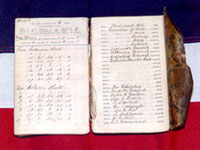Digital Library of Georgia

Bringing together a wealth of material from libraries, archives, and museums, this website examines the history and culture of the state of Georgia. Legal materials include more than 17,000 state government documents from 1994 to the present, updated daily, and a complete set of Acts and Resolutions from 1799 to 1995. "Southeastern Native American Documents" provides approximately 2,000 letters, legal documents, military orders, financial papers, and archaeological images from 17301842. Materials from the Civil War era include a soldier's diary and two collections of letters.
The site provides a collection of 80 full-text, word-searchable versions of books from the early 19th century to the 1920s and three historic newspapers. There are approximately 2,500 political cartoons from 1946-1982; Jimmy Carter's diaries; photographs of African Americans from Augusta during the late 19th century; and 1,500 architectural and landscape photographs from the 1940s to the 1980s.
